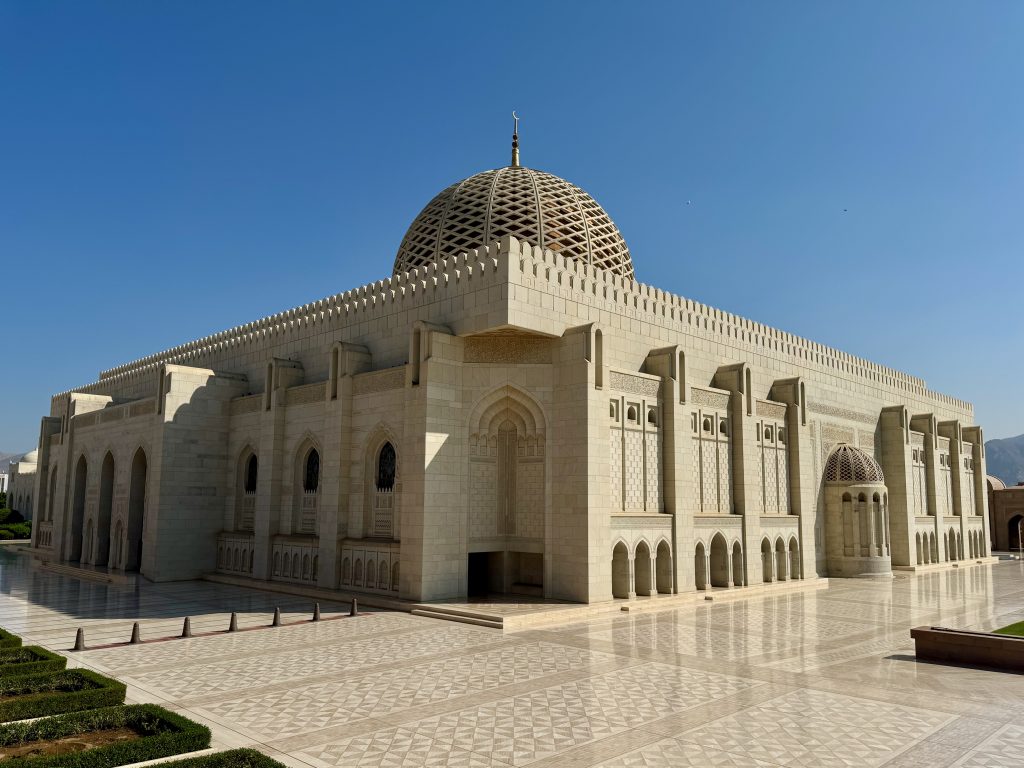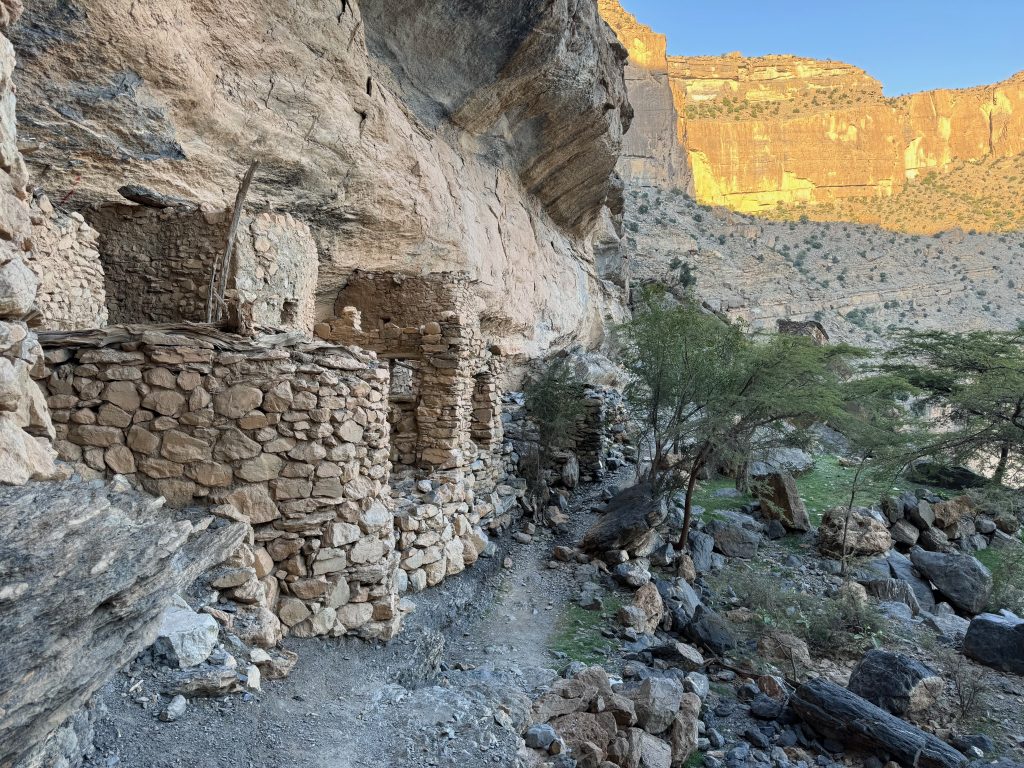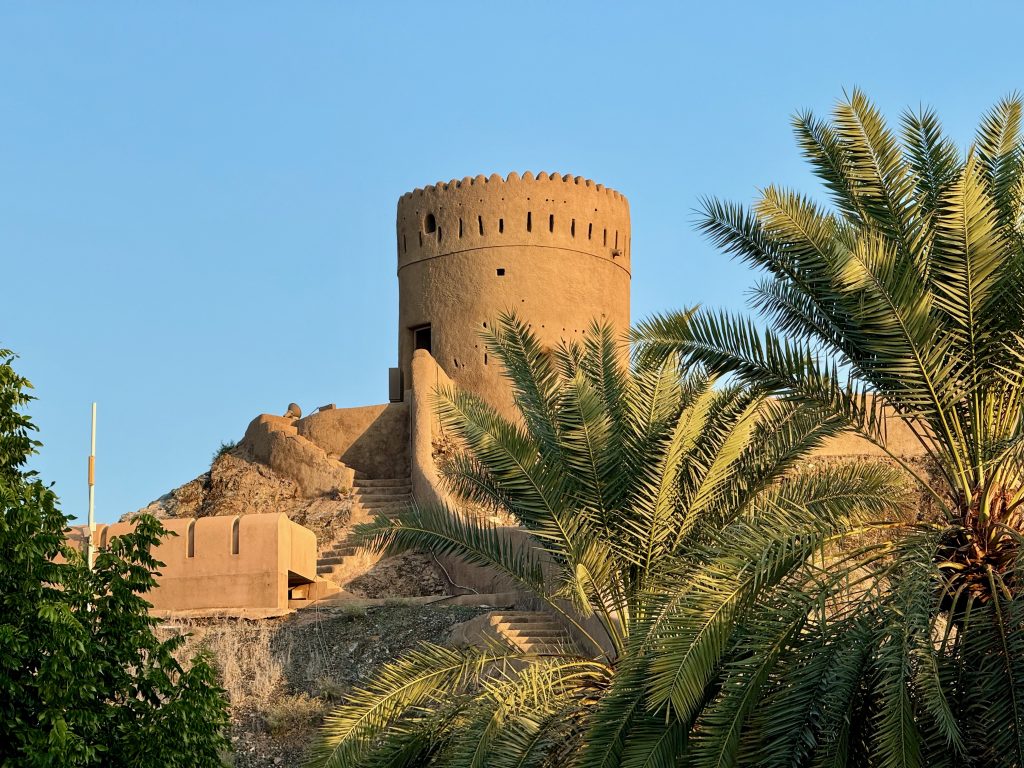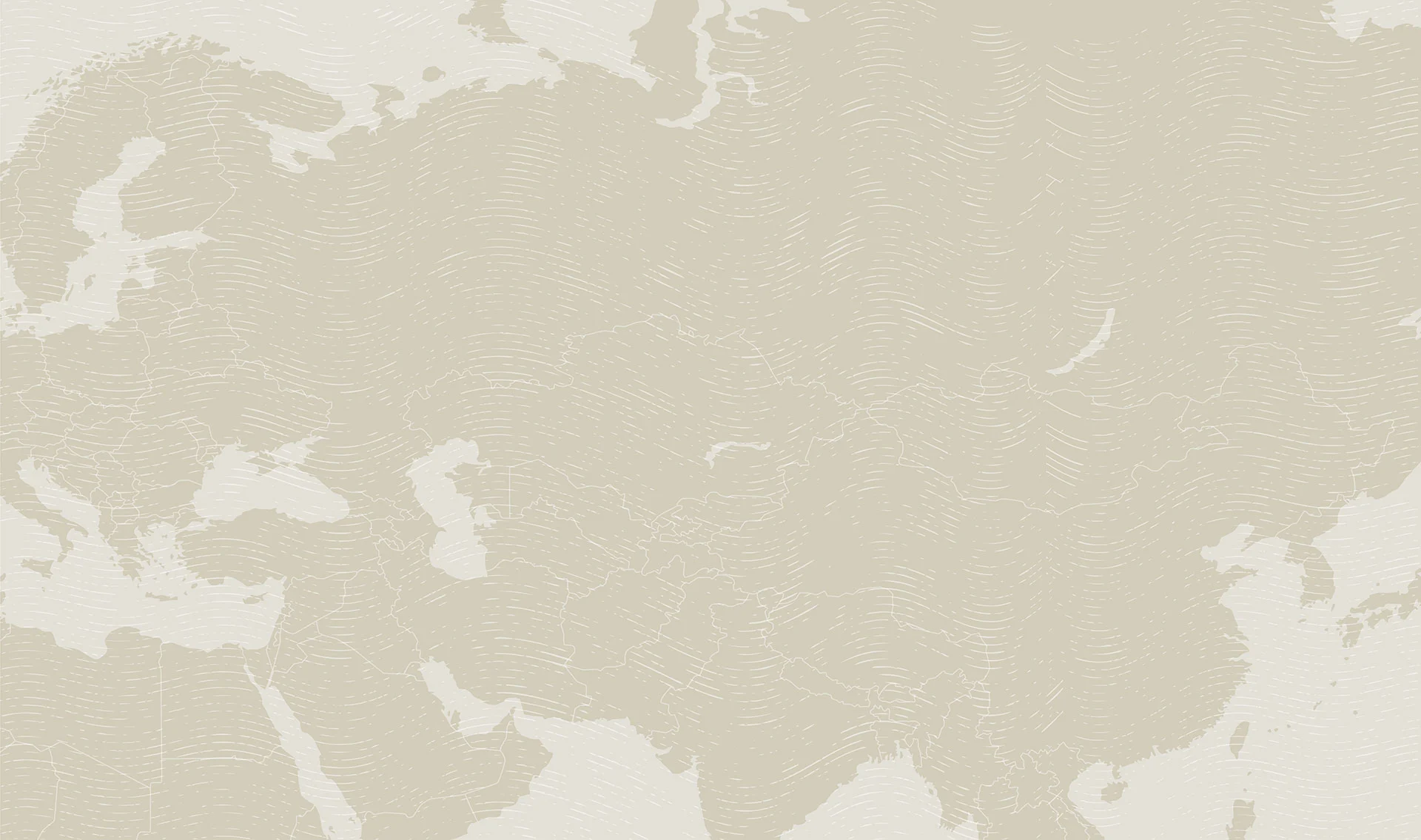72 Hours in Oman
From Muscat to the Hajar Mountains

I recently had the pleasure of spending roughly 72 hours exploring Oman, a country perched in an immensely strategic spot along the eastern edge of the Arabian Peninsula, where the Gulf of Oman and the Strait of Hormuz meet the Persian Gulf. My visit to Oman was effectively an extended layover on my way home, after participating on a MIR small group tour in Iraq (read about my first trip there here). In the three days that I had in the Sultanate I was able to visit the capital city of Muscat, the inland trade hub of Nizwa, the Hajar Mountains, and a scattering of UNESCO-listed forts and archaeological sites. As a layover, it worked well for me, but I truly wish I had been able to stay longer. Oman is worth a dedicated trip, and I will definitely be going back in the future to explore more. Below are some observations that I wanted to share regarding travel in Oman, and a few top things to see while there.





A Peaceful Corner of the Middle East
I must give the usual caveats here that safety is relative and never guaranteed, that travel is a choice, and that government advisories should be considered. That said, Oman is a remarkably peaceful destination, especially considering its strategic location at the mouth of the Persian Gulf. Political unrest, terrorism, war, and violent crime are all quite rare – virtually unheard of, even. The U.S. Department of State has assigned Oman a “Level 2: Exercise Increased Caution” travel advisory. Sweden and Italy have the same rating. Beyond the news and government advisories, Oman also feels quite safe. At least it did to me. The streets are remarkably clean and orderly. There is a visible but not obtrusive police/security presence. Everyone I spoke to was super friendly. Even the drivers seem to follow the traffic rules (there are traffic cameras everywhere!).

Credit: Jake Smith




Muscat: A Port City, Past and Present
Muscat is a gem of a capital city with a ton to do and see. There are no skyscrapers. Pollution and traffic are minimal. The cityscape follows the contours of the coastline and the craggy hills just inland. Architecture often incorporates traditional motifs and building materials. It is a beautiful and captivating place. I only had a few hours to explore and couldn’t go inside any of the reportedly excellent museums or forts in town, but I did visit both the Sultan Qaboos Grand Mosque and the Royal Opera House. Both open their doors to visitors and are sources of pride for many locals (rightfully so). The buildings are exquisitely designed and a pleasure to walk through and photograph.
My favorite spot in Muscat during my 72 hours in Oman was Mutrah, once a port adjacent to Muscat but now effectively incorporated into the larger city. Mutrah runs along a serpentine stretch of harbor, with a market, mosques, and a residential neighborhood wedged between the water and the craggy, desert hills beyond. A scenically perched fort overlooks the harbor. A pedestrian walkway known as the corniche follows the curves of the water, with everything from dhows to yachts to oil tankers moored offshore. Mutrah is also home to a vibrant bazaar filled with handicrafts, frankincense, and more, and a fish market where the day’s catch is on offer. I am not much of shopper, but I thoroughly enjoyed strolling along the corniche and taking in the views. The water in the harbor is so clear that I even saw a wide range of tropical reef fish and three sea turtles swimming right off the corniche!





Ancient Forts: Desert Outposts and Iconic Views
Oman is home to hundreds of forts, possibly as many as a 1000 by some counts! I was able to visit three while there: Bahla Fort, Nizwa Fort, and Jibreen Castle. I was initially a little hesitant about visiting so many similar structures in such a short amount of time, but I am glad that I did. Each is unique and if planning the trip again, I wouldn’t skip any of them. I went first to 17th-century Jibreen Castle. Jibreen stands out as it was both a royal residence and a military installation at various points in its history. It is located in an isolated spot, surrounded by groves of date palms. The highlight for me was viewing the intricately carved and painted wooden ceilings.
I then went to UNESCO-listed Bahla Fort, just a short drive away. Bahla is much larger than Jibreen but more austere and largely unadorned inside. The fort is located in the heart of the modern city of Bahla, so a visit yields great views out over the old and new sections of the town. Those views, especially with the fort’s impressive walls and towers in the foreground and the Hajar Mountains beyond, are in my opinion some of the most iconic scenes in Oman.
The final fort I visited was in Nizwa, the largest town in Oman’s interior. Nizwa Fort was the main power base for the Ya’rubid Imams who ruled the interior of Oman for much of the 17th and 18th centuries. Its final use for military purposes was in the 1950s, during the Jebel Akhdar War, during which it was bombed by the British RAF. Nowadays the fort is one of Oman’s primary attractions. It is surrounded by a labyrinthine bazaar and a range of coffee shops and cafes, making it a great place to explore on foot for a few hours.





The Hajar Mountains: Craggy Peaks and Verdant Wadis
Oman is as well known for its desert and mountain scenery as it is for its forts and historical sights. I ventured up into the Hajar Mountains one day to go hiking on Jebel Shams, the highest peak in the country. On the way up I stopped off to view the UNESCO-listed Bronze-age beehive tombs at Wadi al Ayn. The site was tough to find on my own and I definitely could have used a guide. In the end, a friendly farmer pointed me in the right direction. It is an astounding sight with the sheer rock walls of towering Jebel Misht providing a dramatic backdrop to the tombs. I then continued on to Jebel Shams to hike along the rim of Wadi Nakhar, also known as Oman’s “Grand Canyon.” The views, over 3,000 feet down in places, are stunning. Words, even photos (given the depth and scale), don’t suffice. You have to go to see it!
From Jebel Shams to Jebel Akhdar and beyond, the whole of the Hajar Mountains is gorgeous. Whether you are a hiker or not, you can expect timeless villages with fruit orchards and groves of date palms in the wadis (valleys), framed by the craggy, khaki slopes of the mountains themselves. Jebel Akhdar (which means Green Mountain in Arabic) is particularly noted for its scenic villages and terraced agriculture. I wasn’t able to visit this time, but it is at the top of my list for my next visit to Oman.





Pride in History and Heritage
One thread that unites all the disparate places that I visited in Oman, and something that makes the Sultanate a very special place, is the deep sense of tradition and heritage that pervades modern life there. Oman is a major exporter of fossil fuels, much like its neighbors Dubai and Abu Dhabi. Yet the country couldn’t feel more different. There are no glitzy skyscrapers, nor ostentatious displays of wealth. The emphasis is instead on beauty and preserving Omani culture, while still developing and modernizing. This means that Oman’s many forts and other historically significant buildings are well protected and showcased. It means that the storied waterfronts and bazaars of Mutrah and Old Muscat still feel and look like the history they represent, while simultaneously managing to be beautiful places that are comfortable to visit. There aren’t many places in the world developing in the way that Oman has chosen for itself, and that alone makes it worth a visit.
Travel to Oman with MIR
MIR offers three itineraries that cover the highlights and beyond in Oman. Our small group tour Oman Unveiled crosses the country from north to south, taking in Muscat, Bahla, Nizwa, the Hajar Mountains (and Jebel Akhdar), the Wahiba Sands, and even sea turtle watching on the coast. The trip ends in Salalah, a southern city rich in UNESCO-listed sights pertaining to the ancient frankincense trade there. For independent travelers, or those who can’t travel over the dates of the small group tour, MIR also offers Essential Oman, a private trip with flexible dates covering most of the same highlights. Finally, for those aspiring to take in all of the Arab states lining the Persian Gulf, MIR offers the private, flexible Enhanced Essential Arabian Gulf States. Our travel planners would also love to custom design a trip matching your needs and interests. If you would like to learn more about any of these trips, please download a detailed itinerary or give us a call. Our travel planners are ready!








